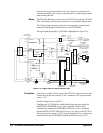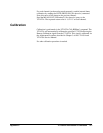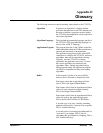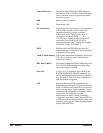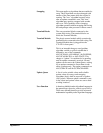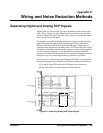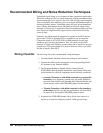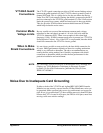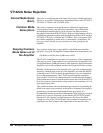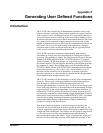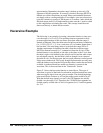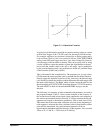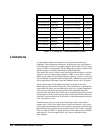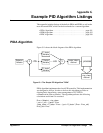
484 Wiring and Noise Reduction Methods Appendix E
Recommended Wiring and Noise Reduction Techniques
Unshielded signal wiring is very common in Data Acquisition applications.
While this worked well for low-speed integrating A/D measurements and/or
for measuring high-level signals, it does not work for high-speed sampling
A/Ds, particularly when measuring low-level signals like thermocouples or
strain gage bridge outputs. Unshielded wiring will pick up environmental
noise, causing measurement errors. Shielded, twisted pair signal wiring,
although it is expensive, is required for these measurements unless an even
more expensive amplifier-at-the-signal-source or individual A/D at the
source is used.
Generally, the shield should be connected to ground at the DUT and left
open at the VT1422A. Floating DUTs or transducers are an exception.
Connect the shield to VT1422A GND or GRD terminals for this case,
whichever gives the best performance. This will usually be the GND
terminal. A single point shield to ground connection is required to prevent
ground loops. This point should be as near to the noise source as possible
and this is usually at the DUT.
Wiring Checklist The following lists some recommended wiring techniques.
1. Use individually shielded, twisted-pair wiring for each channel.
2. Connect the shield of each wiring pair to the corresponding Guard
(G) terminal on the Terminal Module.
3. The Terminal Module is shipped with the Ground-Guard
(GND-GRD) shorting jumper installed for each channel. These may
be left installed or removed, dependent on the following conditions:
a. Grounded Transducer with shield connected to ground at the
transducer: Low frequency ground loops (dc and/or 50/60 Hz)
can result if the shield is also grounded at the Terminal Module end.
To prevent this, remove the GND-GRD jumper for that channel.
b. Floating Transducer with shield connected to the transducer
at the source: In this case, the best performance will most likely
be achieved by leaving the GND-GRD jumper in place.
3. In general, the GND-GRD jumper can be left in place unless it is
necessary to break low frequency (below 1 kHz) ground loops.



